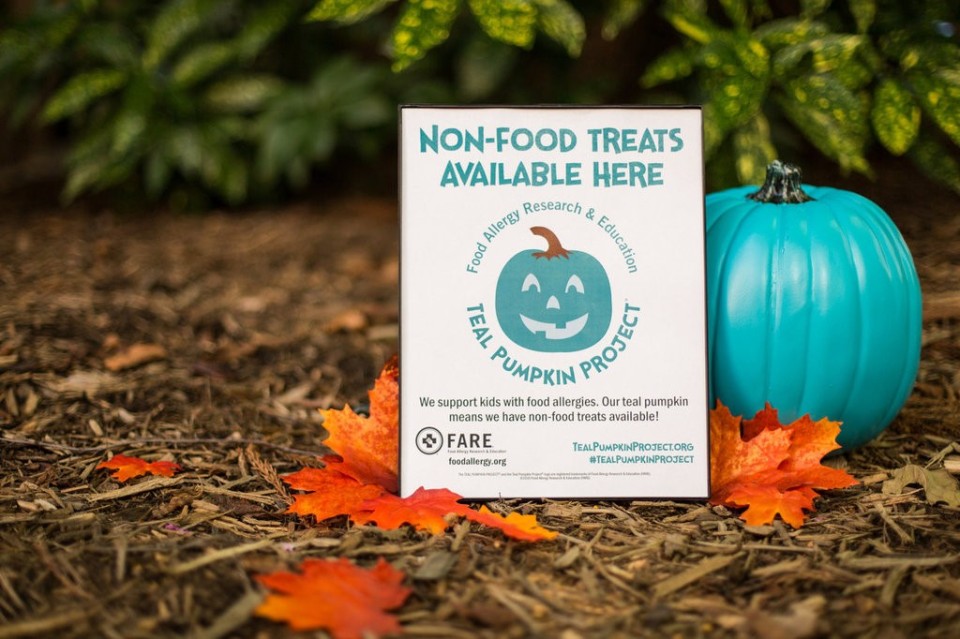
Have you ever thought about what children who have severe food allergies do on Halloween? According to Margareth Delacruz of Vallejo, California, her daughter Kendall’s severe food allergies made Halloween a difficult time for the 6-year-old. “Her allergies started when she was really young and we carry an EpiPen everywhere. During Halloween, she would still go trick-or-treating with other kids but she was never allowed to eat any of the candy.” With over 5.6 million American children under the age of 18 having a life-threatening food allergy, the Teal Pumpkin Project aims to make Halloween a little more inclusive.
What exactly is the Teal Pumpkin Project? In 2012, Becky Basalone of Tennessee wanted to make Halloween safer for her two sons; one of which has a life-threatening food allergy to peanuts, tree nuts, cow’s milk, apple, and cinnamon – some of the most common ingredients in Halloween candy and treats. What started off as an idea that became a viral post on Facebook has now become a worldwide movement backed by the Food Allergy Research & Education (FARE) organization to raise awareness and promote inclusivity during this holiday.
You may be wondering, why teal? Teal has been the color used to raise awareness for severe food allergies for over 20 years. To participate, all you need to do is place a teal pumpkin outside of your house or put up a Teal Pumpkin Project poster and provide non-food treats for trick-or-treaters. The FARE website has a helpful list of safe and inexpensive items to pass out on Halloween such as:
- Glow sticks
- Pencils, crayons, or markers
- Stickers
Having traditional candy available for children without allergies is more than welcome, but make sure to keep the non-food items and candy in separate bowls to prevent possible contamination. You can also add your address to the Teal Pumpkin Project Map to show your support for the cause, as well as connect with other families who want to safely trick-or-treat with their children.

Aside from food allergy awareness, Margareth thinks that the Teal Pumpkin Project will also have positive implications overall. “I think that everyone will benefit from the project too. I see it as a healthier alternative to trick-or-treating. It’s not the healthiest thing to introduce massive amounts of sugar to kids at such a young age, and we all know that sugar is very addictive.” She also mentions that children without allergies but have dietary restrictions will benefit as well. “For kids with ADHD or diabetes that have special diets, this project will be a great alternative too.”
For more information, visit the FARE website to see how your family can participate this year and help kids all over the world have a safe and fun Halloween!


